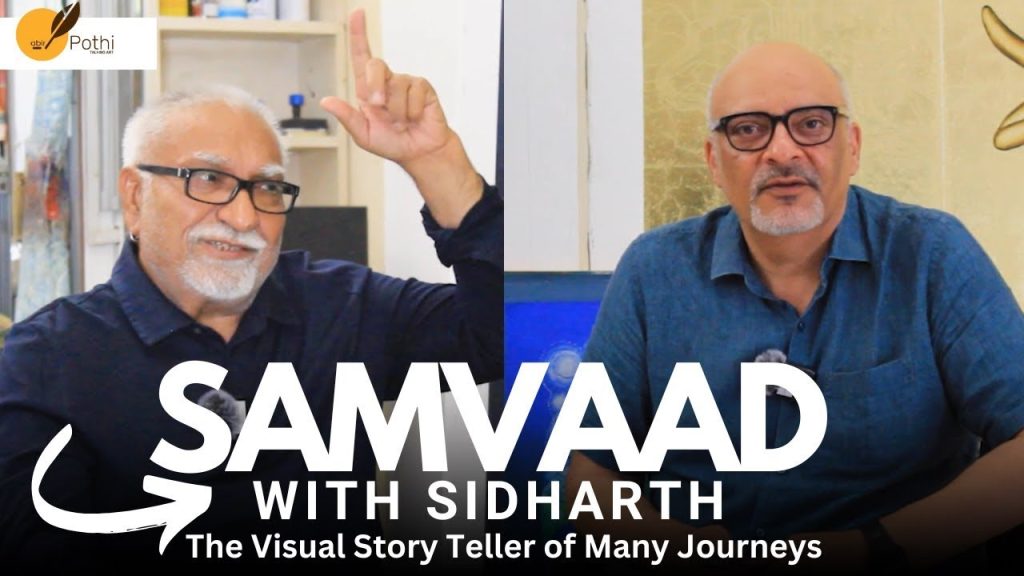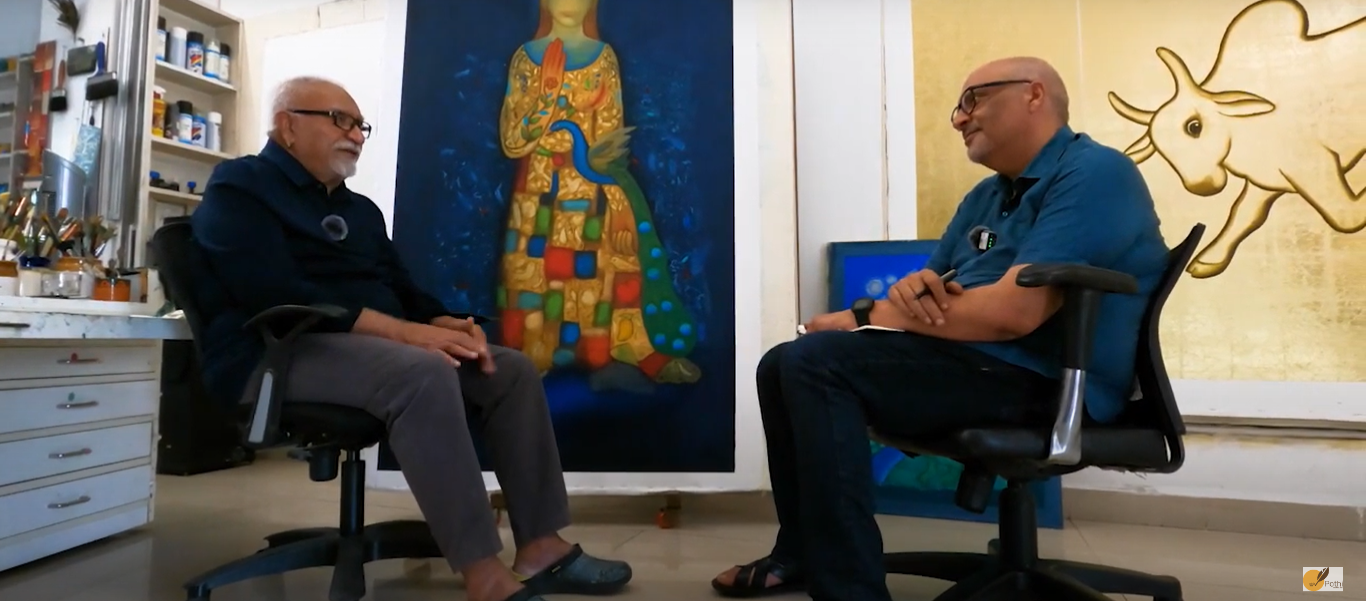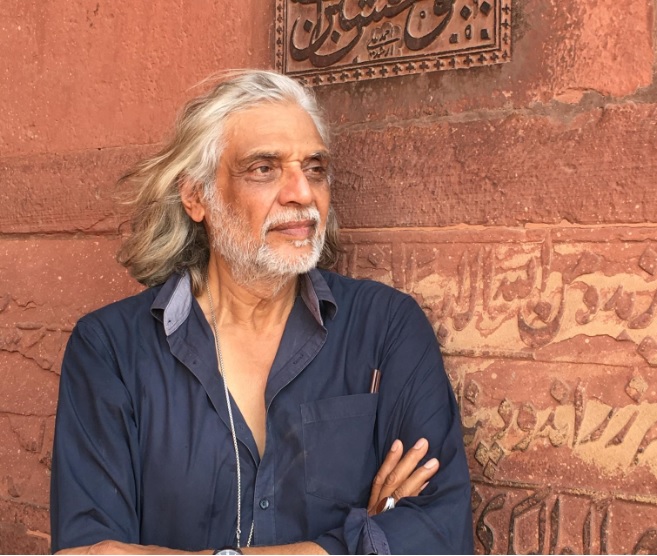Welcome to Samvaad, where art meets conversation, and inspiration knows no bounds. Here we engage in insightful conversations with eminent personalities from the art fraternity. Through Samvaad, Abir Pothi aims to create a platform for thought-provoking discussions, providing readers with an exclusive glimpse into the creative processes, inspirations, and experiences of these creative individuals. From curating groundbreaking exhibitions to pushing the boundaries of artistic expression, our interviews shed light on the diverse perspectives and contributions of these art luminaries. Samvaad is your ticket to connect with the visionaries who breathe life into the art world, offering unique insights and behind-the-scenes glimpses into their fascinating journeys.
This is Part IV of Samvaad between Nidheesh Tyagi from Abir and Sidharth. While still at school in his village Sidharth started painting signboards. Working as an apprentice with village mason Tara Mistry, he learned the art of creating murals and friezes. Later he went on to learn the Thangka painting technique from the Tibetan monks in Mcleodganj. He spent some time with artist Sobha Singh (painter) too at his studio in Andretta, Himachal Pradesh. After doing a five-year diploma in painting from the Government College of Arts, Chandigarh he went to Sweden for some time. He is now settled in New Delhi where he has his own studio. Sidharth has participated in more than 135 group shows in the UK, Sweden, the US, Singapore and Hong Kong besides India. An honorary degree of DLitt was conferred on Sidharth in 2012 by Punjabi University, Patiala.
Nidheesh: Yes. Tell us something about your large collection of paintings, which started in Chandigarh and continues till now. I find it very significant and it keeps changing.
Sidharth: Yes. For example, in the beginning, when I was in Chandigarh College of Arts, I started painting people standing at a bus stand. But why did I? There were two reasons for that. The biographical reason is that I had to sit at the bus stand to survive. I used to make portraits for people in minimal amounts like five rupees, or ten rupees. People supported me there. I used to spend time at the bus stop after my college in the evening. I used to practice my drawing till evening to midnight at the bus stand. You have to believe that I made more than one lakh drawings, standing at the bus stand. And that too in two-three years. My teacher Prem Singh Ji motivated me to draw human figures at the bus stand. Also motivated me to do architectural drawings of buses, cars etc. So, I purchased the whole rim of A4 sheets and a pencil of 6B. I used that one pencil of 6B in four ways. Identified its fine edge, middle edge, big edge, and biggest edge. Used to carve it in a diamond shape and therefore was able to use four tones from it.
So, I almost did one lakh or one and a half lakh drawings there. I had no place to live, I stayed at the bus stand. Later, I lived at a farmhouse. Used to be a guard there. I made sculptures and painted at the same time. Used to get a hundred two hundred rupees for the same. This is how I found a place to stay. Had no worries about the food because the gardener who worked there used to share food with me. It became a wonderful situation for me at that time, and I really cherish that. Used to sing at night, made portraits at the bus stand in the evening, and spent time in art school in the morning. I Spent time at the bus stand and wondered what kind of people they are. Suddenly, the bus arrived and everybody boarded it. This was a special kind of narrative in my head, and I thought it should be filmed. Eventually, I made a short film as well.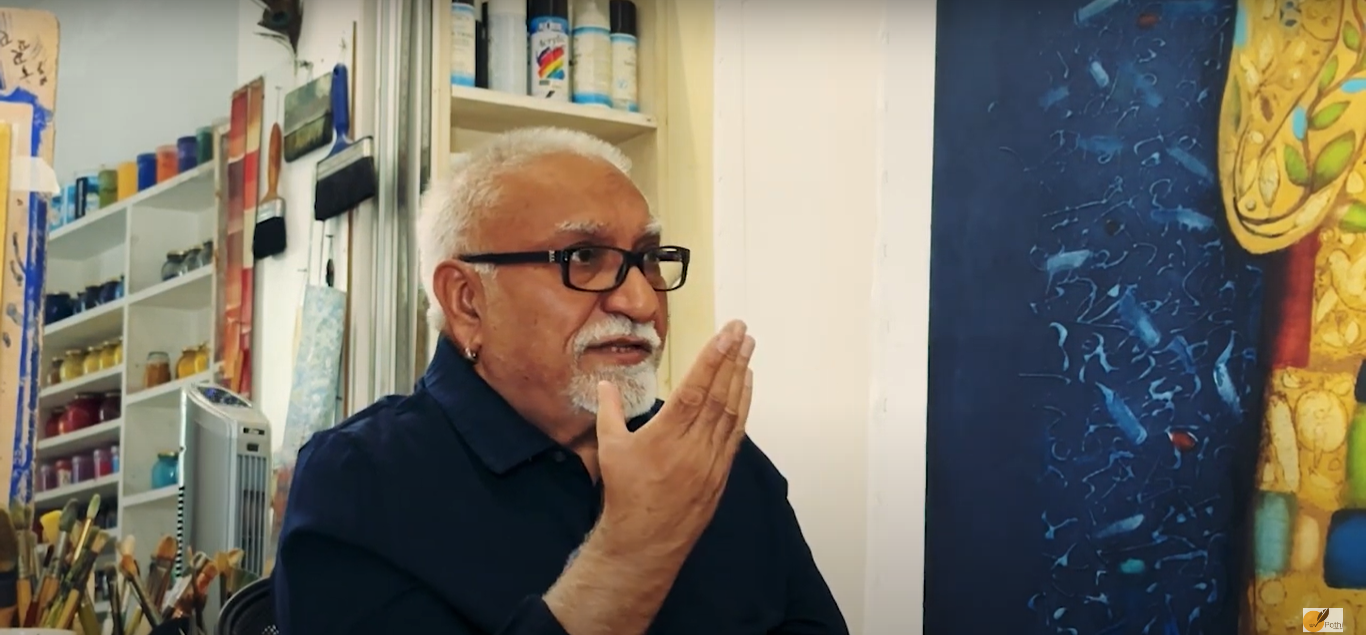
I took a 16mm camera from my friend and shot the entire narrative. Then I started painting people on my canvas. A Hundred – two hundred of them were standing on the bus stand waiting for the bus. I did the etchings, drawings, and paintings in different sizes. Then I thought I should not make the heads of men and women only, I should get over those. I made man and woman stand at different places, I left the kid because it was not the man and not the woman, but the question was, how should I make those figures gender-free? I was not happily drawing their slippers, shoes, and turbans. Did not want to make them Sikhs or someone else. I just wanted a human, not a woman not a Hindu, not a man, not beautiful, not ugly but just people.
This is what I made in my paintings; my characters were not nude not even wearing clothes properly. I never thought of making a woman or any person using a couple of circles, and a triangle. Most of the artists did that, but I was not in favour. I am free of two circles and one triangle. I made myself free there. After so much hard work I invented a shape that was not of any gender but was just a human. Not a Hindu, not a Sikh, not a Christian, etc. The shape belongs to nothing. I achieved that beautifully. Then, I made some sculptures that are free from gender and religion. Those were very beautiful. Made of paper mache technique, which I learned from my mother. I take techniques from everywhere, even now. Like, this is a technical world and I use Photoshop. I take big prints on plotter, I work on them as well. I walk on them.
Nidheesh: After that?
Sidharth: Then, there was a show, and I was asked for a painting. They didn’t want the bus stand. I used to see kids playing the hopscotch game on the streets. They used to make several rectangles dividing them into houses, farms, rivers, mountains, seas, and gods. The way they spoke it, is also a narrative. I was mesmerized and decided to paint landscapes like that only. I painted a landscape of a very big size. Portrayed the whole day from sunrise to sunset. I painted every element including House, Farm, River, Mountain, Sea, and nearby god.
Sidharth: It became a wonderful landscape. Generally, the landscapes we make are nothing but photographic images. But, this style became a new metaphor. It became a two-dimensional landscape of the whole earth. It comprised the whole universe. A kid dancing here and there and gained rebirths in the form of fish, in the form of a bird, in the form of a tree, in the form of wheat, and several other forms. The stone becomes the moon and sun and gets birth again. The game of hopscotch is like a life, it keeps on going from death to birth and birth to death. I found myself in it. That’s where I belong to. I found a metaphor. Worked a lot on that philosophy, and really enjoyed it a lot. And then I spread it in every direction.
It became like a mandala of Thangka paintings. It comprised every colour, in different sizes. I found myself sitting at the centre. I really, really enjoyed it a lot. I found it scientific and wondered what Mondrian did. I started doing my research on his works. He found an apple tree on a mountain covered with snow. He used a black tree standing in the snow having only two or three apples to create a golden grid. I feel we Indians walk backwards, we already have golden grids. We just filled everything in it. It was like scientific research work that I did and successfully completed it. I had a show in India, and I portrayed twenty-five artworks, all of which were sold out on the first day itself, including the work which was at my house. There were hundreds of works. I purchased my first house with that money in Delhi.
Nidheesh: How long have you been doing natural pigments?
Sidharth: I am doing it from the beginning itself. But, I don’t say NO to other pigments. I work with every colour. However, I feel more joy in working with natural pigments.
Nidheesh: Then?
Sidharth: After that, I did many subjects in the same way. Like I worked on cows. I like to work on a particular subject for a long time. For example, I worked on the river Ganga for ten years. I did Hopscotch, Cow, then I did Kaleidoscope, I did Ball of Rags, and then Ganga was the last one. Now, I am thinking of some characters that I know and have written about. In the last few days, I wrote about two hundred and twenty-five stories.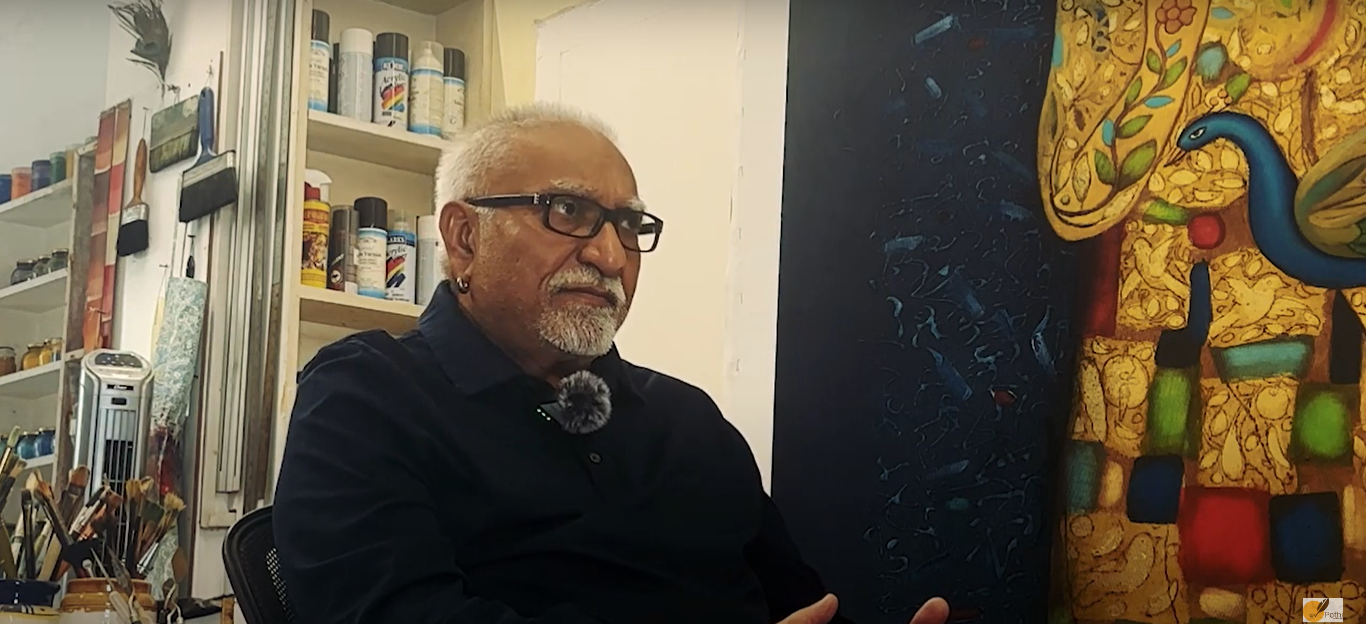
Nidheesh: How do you mould yourself as a writer, painter, poet, singer and storyteller at the same time?
Sidharth: I always tell this to everyone who asks me this question that, I write and tell stories. Whenever I am in love, I write poems and sing songs. In addition, whenever there is a higher state within me, I remain calm and watch like a small child. Sometimes, I do nothing. This is absolute zero. Moreover, that is what I have, and it takes a kind of bravery or fearlessness to express all of that. We humans always live in the feeling of fear. We are afraid before doing anything. I have no fear of any kind. I am completely free. I am free even in my mind. I am not afraid of anything. I have only one fear that I may not harm anyone in any form. In addition, how can I be afraid if my work brings happiness to someone?
Nidheesh: Yes
Sidharth: I am not going to tell any sad story because there is no sorrow in my life. I think this world is full of happiness and everything is beautiful. I do not understand sadness. Because I always feel that someone who has never seen suffering is more interested in it. In addition, the one who saw it, the one who saw the demise, the one who saw the troubles, for them there is no sorrow in this world. A true man sets out to find what he does not have. I do not call myself a true man; I am just saying that a person who lacked something tried to find it. In addition, an artist must find those things to make themselves and others happy.
Nidheesh: Yes
Sidharth: Then why should I talk about sorrow?
Transcribed By Abhishek Dixit.
Read Part V below:
Samvaad with Sidharth: The Visual Story Teller of Many Journeys (Part 5 of 5)

Contributor

